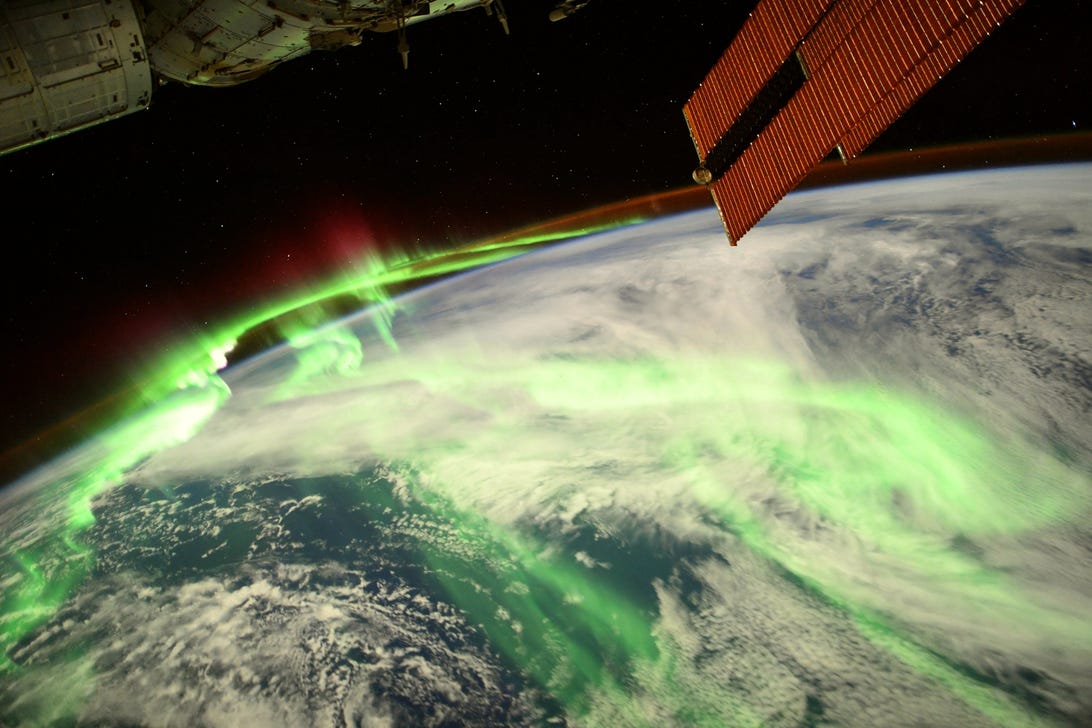

ESA astronaut Thomas Pesquet captured a stunner of a view of an aurora during a full moon in September 2021.
Thomas Pesquet/ESAOn March 23, NASA plans to send two rockets over a hundred miles above Earth, each timed perfectly to punch through one of nature's most extraordinary works of art: the northern lights, also known as the aurora borealis.
Though we know quite a bit about light shows like these, such as their characteristic neon green luminescence and their abundance near the poles, there are still a few gaps in our knowledge.
More specifically, scientists aren't exactly sure how auroras interact with Earth's natural atmosphere, which is precisely what the agency's upcoming endeavor -- dubbed the Ion-Neutral Coupling during Active Aurora mission, or INCAA -- aims to decode.
What we don't know about auroras
Think of our planet's atmosphere as layered, kind of like a cake. We're in the lowest layer.
Down here, elements like oxygen and nitrogen are balanced, breathable and hold electrons steadily in atomic orbit. This is what's called the neutral gas atmosphere.
As we rise through the layers, things change.
The upper layers of our atmosphere are exposed to sun rays in a way we aren't, and these rays alter the composition of nearby atoms. They rip electrons, which normally have a negative charge, from their orbits and turn them into positive particles. In fact, this environment is so different from the neutral gas atmosphere that it isn't even considered a gas anymore. It's a fourth state of matter, known as a plasma.
And the existence of these two atmosphere types means there's a shift from one to the other. The boundary isn't clear, but it's definitely there. And when auroras form, they change things even more.
In short, auroras happen when the sun coughs up a bunch of charged electrons, from its own plasma ocean-like body, in an event called a coronal mass ejection. Those electrons are sometimes caught in Earth's atmosphere, interact with other particles, and together, make incredible, colorful illumination. But here's what we don't know.
What do these aurora particles do to the space in our atmosphere where neutral gas meets plasma? What happens around the boundary? Per the INCAA team, auroras could make the boundary region fall lower, rise up or even fold in on itself.
"All of these factors make this an interesting physics problem to examine," Stephen Kaeppler, assistant professor of physics and astronomy at Clemson University in South Carolina, and principal investigator for the INCAA mission, said in a statement.
Entering the northern lights
Kaeppler and the rest of the INCAA mission team will send up two research payloads from a launchpad in Poker Flat, Alaska. Each will be attached to two separate rockets called sounding rockets, straight into an active aurora. These vessels are small launch vehicles that hover in space for just a few minutes, then fall back down to Earth. Upon descent, though, the payloads will have attained buckets of valuable information about the auroras.
Rocket one, the team says, will release vapor tracers -- similar to colorful chemicals that are used in fireworks -- to track how winds near the aurora are traveling. It's like dying the air to watch it move around. Then the second rocket will measure temperature and density of the plasma in the aurora's vicinity.
In a few days, we might be able to cross yet another problem off the unending list of physics puzzles.









 Add Category
Add Category